Paisley, Renfrewshire, Scotland, UK 作者: 来源: 发布时间:2021-07-29
I. Population and Area
Continent: Europe
Country: The U.K
State/Province: Scotland
City/Town: Paisley, Renfrewshire
Total Area: 3.4 (sq mi)
Population in 2018: 77.31 (thousand)
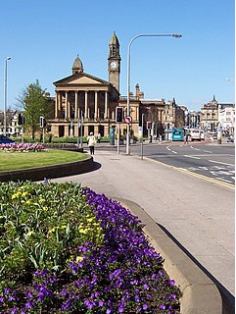
Reference Website:
https://www.google.com.hk/search?newwindow=1&safe=strict&ei=9DFtX9WRBczb-gT1zJDIAw&q=total+area+of+Paisley&oq=total+area+of+Paisley&gs_lcp=CgZwc3ktYWIQAzIFCCEQoAFQuoxYWLqMWGCikFhoAHAAeACAAZICiAGFBJIBAzItMpgBAKABAaoBB2d3cy13aXrAAQE&sclient=psy-ab&ved=0ahUKEwjV2-r7_oLsAhXMrZ4KHXUmBDkQ4dUDCA0&uact=5
II. Natural Geography (environment and resources)
Geography
Paisley sits primarily on an expanse of low ground around 12 metres (40 ft) above sea level surrounding the White Cart Water, which runs through the town centre. There are some hills and ridges which have been absorbed as the town has expanded. The settlement is historically centred on Oakshaw, an area surrounding a hill to the north of the current High Street. Oakshaw is a conservation area, and on the high ground many of Paisley's significant buildings can be found, such as the High Kirk, the Coats Observatory and the former John Neilson Institution, which was once a school and is now converted into residential flats. Around the centre there are a large number of older residential buildings. The town centre, Whitehaugh, Seedhill and Charleston areas contain many examples of Scottish tenement flats. Three to four storeys tall, with shops on the ground floor and constructed of local pale and red sandstone, these tenement flats have been extensively restored and modernised over the last two decades.
Climate
Paisley expanded steadily, particularly in the Victorian and Edwardian eras, creating many suburbs. Castlehead is a wooded conservation area primarily made up of Victorian villas where many of the town's leading industrialists made their homes in the late 19th century. Thornly Park is another conservation area, to the south of the town, just off Neilston Road heading towards Barrhead. It contains a variety of architecture ranging from mock Tudor to Art Deco. Many of the houses were designed by W. D. McLennan, a contemporary of Charles Rennie MacIntosh. McLennan also designed several local churches such as St Matthew's and St Nazarene, which is located on Gordon Street. Particularly following the Housing Act 1946, modern Paisley grew into the surrounding countryside, and several large residential areas were created in the post-war period. These include portions of Glenburn (south), Foxbar (south west), Ferguslie Park (north west), Gallowhill (North East) and Hunterhill (South East). Gockston in the far north of the town has many terraced houses, and after regeneration has many detached and semi-detached houses as well as several blocks of flats. Dykebar, to the south east of the town centre, is a residential area which is also the site of Dykebar Hospital, a secure psychiatric hospital.
Transport
Paisley is connected to the motorway network and the National Rail network, and contains Glasgow Airport within its boundaries. Paisley is connected by road to the UK motorway network, with the M8 running along the northern edge of the town, providing access to Greenock to the west and Glasgow to the east. This forms part of the unsigned E05 Euroroute from Greenock to Gibraltar. Many major A roads converge through the town, including the A726, A737 and A761. The Strathclyde Partnership for Transport, a public body, has direct operational responsibilities covering the area, such as supporting (and in some cases running) local bus services in Paisley and across Strathclyde] The town has four railway stations and is linked by rail to Glasgow city centre as well as Inverclyde and the Ayrshire coast. Paisley Gilmour Street is the largest of the stations and is also the fourth busiest train station in Scotland. There are also smaller stations at Paisley St James, Paisley Canal and Hawkhead. The rail links also connect to Glasgow Prestwick International Airport and ferry routes to Dunoon, the Isle of Arran, Isle of Bute and Northern Ireland. Over the years there have been thirteen railway stations in Paisley and three rail lines that are now closed (The Paisley and Barrhead District Railway, the Barrhead Branch of the GSWR, and the Paisley and Renfrew Railway). Paisley Canal station and the Paisley Canal Line owe their names to the Glasgow, Paisley and Johnstone Canal which occupied the route of the line until 1885, when it was filled in.
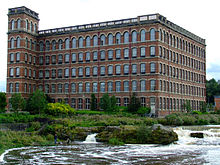
III. Economy
Average Salary in Paisley, Scotland: Renfrewshire £24k


About Paisley, Scotland: Renfrewshire
The average salary in Paisley, Scotland: Renfrewshire is £24k. Trends in wages decreased by -100.0 percent in Q2 2020. The cost of living in Paisley, Scotland: Renfrewshire is 100 percent higher than the national average. The most popular occupations in Paisley, Scotland: Renfrewshire are Interior Designer, Staff Nurse, and Lecturer / Speaker which pay between £16k and £47k per year. The most popular employer in Paisley, Scotland: Renfrewshire is Renfrewshire Council.
Renfrewshire's Economic Strategy 2020-2030 sets out the ambitions and actions to achieve sustained, inclusive growth of the Renfrewshire economy over the next 10 years. Its development has been led by the Renfrewshire Economic Leadership Panel, bringing together leaders from across the private and public sector, enterprise agencies and education and skills experts.
Renfrewshire has a strong economy. We're home to more than 5,600 businesses and export £2billion of goods and services worldwide. There are key sectors of strength in manufacturing, construction and transport and storage and emerging sectors in creative industries, tourism and care.
The 44-page document considers the challenges to growth and details the steps we will take to achieve six strategic ambitions:
·Add more than 9000 jobs to the economy
·Add an additional £400million GVA per annum
·Grow the working-age population by 5000 people
·Reduce economic inactivity by 15% bringing 3000 local people into the workforce
·Reduce by 60% the businesses reporting skills gaps and shortages impacting on performance
·Grow Renfrewshire manufacturing GVA by 30%
Reference Website:
http://renfrewshire.gov.uk/economicstrategy
https://www.payscale.com/research/UK/Location=Norwich-England%3A-Norfolk/Salary
IV. Industrial Characterisitics
Major industries:
The Industrial Revolution, based on the textile industry, turned Paisley from a small market town to an important industrial town in the late 18th century. Its location attracted English mill owners; immigrants from Ayrshire and the Highlands poured into a town that offered jobs to women and children. However, silk fell out of fashion in 1790. The mills switched to the imitation Kashmir (cashmere) shawls called "Paisley". Under the leadership of Thomas Coats (1809-1893), Paisley became the world centre for thread making. The high-status skilled weavers mobilised themselves in radical protests after 1790, culminating in the failed "Radical War" of 1820. Overproduction, the collapse of the shawl market and a general depression in the textile industry led to technical changes that reduced the importance of weavers. Politically the mill owners remained in control of the town.
Paisley, as with other areas in Renfrewshire, was at one time famous for its weaving and textile industries. As a consequence, the Paisley pattern has long symbolic associations with the town. Until the Jacquard loom was introduced in the 1820s, weaving was a cottage industry. This innovation led to the industrialisation of the process and many larger mills were created in the town. Also as a consequence of greater mechanisation, many weavers lost their livelihoods and left for Canada and Australia. Paisley was for many years a centre for the manufacture of cotton sewing thread. At the heyday of Paisley thread manufacture in the 1930s, there were 28,000 people employed in the huge Anchor and Ferguslie mills of J & P Coats Ltd, said to be the largest of their kind in the world at that time. In the 1950s, the mills diversified into the production of synthetic threads but production diminished rapidly as a result of less expensive imports from overseas and the establishment of mills in India and Brazil by J & P Coats. By the end of the 1993, there was no thread being produced in Paisley. Both industries have left a permanent mark on the town in the form of the many places with textile related names, for example, Dyer's Wynd, Cotton Street, Thread Street, Shuttle Street, Lawn Street, Silk Street, Mill Street, Gauze Street and Incle Street.
The town also supported a number of engineering works some of which relied on the textile industry, others on shipbuilding. Paisley once had five shipyards including John Fullerton and Company (1866–1928), Bow, McLachlan and Company (1872–1932) and Fleming and Ferguson (1877–1969).
A number of food manufacture companies existed in Paisley. The preserve manufacturer Robertsons began in Paisley as a grocer whose wife started making marmalade from oranges in 1860. This product was successful and a factory was opened in Storie Street, Paisley, to produce it in 1866 and additional factories were later opened in Manchester, London and Bristol. The company was taken over by Rank Hovis McDougall who closed its Stevenson Street factory and transferred production to England in the 1970s. Brown and Polson was formed in Paisley in 1840 and two years later started producing starch for the weaving trades, by 1860 it was making food products including its patent cornflour. It later became CPC Foods Ltd, a subsidiary of Unilever, which produced Hellmann's mayonnaise, Gerber baby foods and Knorr soups. The company ceased production in Paisley in 2002.
In 1981 Peugeot Talbot, formerly Chrysler and before that Rootes, announced that its Linwood factory just outside Paisley would cease production. This led to the loss of almost 5,000 jobs. At one time M&Co. (Mackays) had its head office in Caledonia House in Paisley.
Major projects and related introductions:
Glasgow City Region City Deal.
Plans behind the £39.1million Glasgow Airport Investment Area project have also been submitted to Renfrewshire planning officials.
Construction of a new bridge over the White Cart, realignment of Abbotsinch Road, and new cycle routes form the project proposals to improve connections between the existing Westway, Inchinnan and Airport business parks.
It will also facilitate the creation of a world class business and commercial location in the heart of Renfrewshire, connected by air, sea and land.
If approved, work on both projects is expected to start on site in 2018 with construction completed in 2020.
Extensive engagement with more than 2000 people has signalled strong public support for the projects, with feedback surveys showing 90 per cent backing for the Clyde Waterfront and Renfrew Riverside project, while 94 per cent of respondents are behind the Glasgow Airport Investment Area project.
The projects are funded through the £1.13billion Glasgow City Region City Deal, an agreement between the UK Government, Scottish Government and eight local authorities across the Glasgow City Region to deliver improved infrastructure, create new jobs, tackle unemployment and drive innovation and growth.
Reference Website:
https://www.paisley.org.uk/2017/07/plans-submitted-major-infrastructure-projects/
V. Attractions
1. Paisley Abbey:
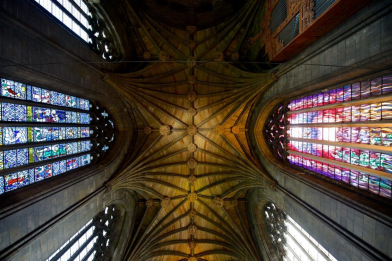
Take in some of Paisley’s history at the 850 year-old medieval Abbey. The spectacular site is believed to be the location where William Wallace was educated and is also the final resting place of six high Stewards of Scotland including Marjory Bruce – the daughter of Robert the Bruce. You can take one of the fantastic guided tours of the Abbey at 2pm on Tuesdays & Thursdays.
2. Paisley Town Hall:
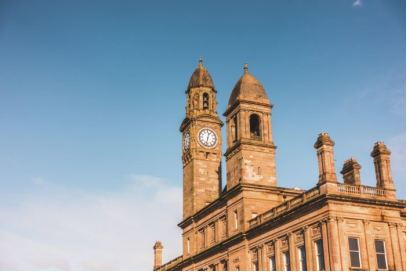
This eye-catching 19th century building, located right next to Paisley Abbey, instantly grabs your attention as you enter the town centre. Paisley Town Hall features prominently in Renfrewshire’s events calendar, regularly hosting concerts and social events throughout the year. The venue’s stunning Victorian architecture also makes it a popular setting for weddings and ceremonies.
3. Sma’ Shot Cottages:
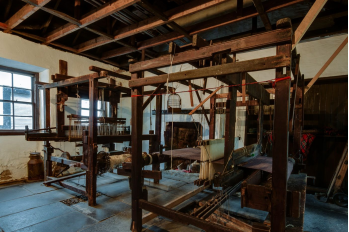
Take a step back in time and experience life as a weaver at Paisley’s famous Sma’ Shot Cottages. Local guides are on hand to give you an insightful tour of the 1750s weaver’s cottage before letting you explore a number of historically decorated cottages dating back to the 1820s. No visit is complete without stopping by the tea room and enjoying a slice of cake before returning to the present day!
Reference Website:
https://paisley.is/listing/amazing-attractions-to-explore-in-paisley-and-renfrewshire/
VI. History
Early history
Formerly and variously known as Paislay,Passelet, Passeleth, and Passelay the burgh's name is of uncertain origin; some sources suggest a derivation either from the Brittonic word pasgill, "pasture", or from passeleg, "basilica", (i.e. major church), itself derived from the Greek βασιλική basilika. However, some Scottish place-name books suggest "Pæssa's wood/clearing", from the Old English personal name Pæssa, "clearing", and leāh, "wood". Pasilege (1182) and Paslie (1214) are recorded previous spellings of the name. The Gaelic translation is Pàislig.
Paisley has monastic origins. A chapel is said to have been established by the 6th-/7th-century Irish monk, Saint Mirin at a site near a waterfall on the White Cart Water known as the Hammils. Though Paisley lacks contemporary documentation it may have been, along with Glasgow and Govan, a major religious centre of the Kingdom of Strathclyde. A priory was established in 1163 from the Cluniac priory at Wenlock in Shropshire, England at the behest of Walter fitz Alan, Steward of Scotland (d. 1177). In 1245 this was raised to the status of an Abbey. The restored Abbey and adjacent 'Place' (palace), constructed out of part of the medieval claustral buildings, survive as a Church of Scotland parish church. One of Scotland's major religious houses, Paisley Abbey was much favoured by the Bruce and Stewart royal families. King Robert III (1390–1406) was buried in the Abbey. His tomb has not survived, but that of Princess Marjorie Bruce (1296–1316), ancestor of the Stewarts, is one of Scotland's few royal monuments to survive the Reformation.
Paisley coalesced under James II's wish that the lands should become a single regality and, as a result, markets, trading and commerce began to flourish. In 1488 the town's status was raised by James IV to Burgh of barony. Many trades sprang up and the first school was established in 1577 by the Town Council.
Witch Trials
The Paisley witches, also known as the Bargarran witches or the Renfrewshire witches, were tried in Paisley in 1697. Seven were convicted and five were hanged and then burnt on the Gallow Green. Their remains were buried at Maxwelton Cross in the west end of the town. This was the last mass execution for witchcraft in western Europe. A horse shoe was placed on top of the site to lock in the evil. A horse shoe is still visible in the middle of this busy road junction today—though not the original. The modern shoe is made of bronze and bears the inscription, "Pain Inflicted, Suffering Endured, Injustice Done".
VII. Culture
Media
Paisley has one local daily newspaper, the Paisley Daily Express, which is owned by the Trinity Mirror Group. Various local radio stations have operated at times, including Q96 from 1992 to 2007 – serving the Renfrewshire area, although for a considerable period based in neighbouring Glasgow. Its replacement, Glasgow-based Guardian Media Group station 96.3 Rock Radio carries Renfrewshire focused material. Since October 2011 Rock Radio, faced with falling advertising revenue, was rebranded by Guardian Media Group as Real Radio XS after a proposed management buyout failed to materialise .
Sport
St Mirren F.C. is Paisley's sole professional association football team. As of 2018, it plays in the Scottish Premiership. In 2009, the team moved from their Love Street stadium to a new 8,029 capacity stadium, known formally as St Mirren Park, on Greenhill Road. The stadium was later renamed as The Paisley 2021 Stadium to mark the town's bid to be UK City of Culture in 2021.
St Mirren last won the Scottish Cup on 16 May 1987. Since then, the club has won the Scottish First Division title twice, in 1999–2000 and in 2005–06, as well as winning the Challenge Cup in 2005. The club won the Scottish League Cup for the first time in its history on 17 March 2013. In addition to professional football, the club is also involved in youth development and social projects in the town. Another professional football team, Abercorn F.C., was based in Paisley until its decline and liquidation in 1920.
Basketball has a strong history in Paisley. St Mirren is a leading basketball team, currently competing in Division 1 of the Scottish National League. The team was formed in 1997 and are regular challengers at the top of the table. They have won the National League title once, in 2000, and have won the Scottish Cup three times (1999, 2002 and 2012). Previously, Paisley BC were one of Scotland's strongest teams in the heyday of the 1970s and 1980s. The team broke the dominance of Edinburgh-based Boroughmuir, who had won the National League title in the previous nine seasons, with their triumph in 1979. Including their merger to become PSG, Paisley spent thirty seasons in the top division of Scottish basketball, from the National League's formation in 1969 until 2000. After disappearing for more than a decade, the club has been revived.
Paisley Rugby Club is an amateur rugby union club based at the Anchor Recreation Grounds in Paisley. The club is currently in the Scottish BT West Division 2. The club runs two adult teams and several youth teams. The 1st XV was coached by Grant Sweenie and Les Wilson and captained by David Dodd for the 2015-16 season. The 2nd XV was captained by Scott Glover. With a mix of youth and experience, Paisley's 1st XV finished 6th in BT West Division 2, after gaining promotion for finishing 2nd in BT West Division 3 the previous year. Paisley 2nd XV secured their best ever league position of 5th in the BT Reserve League West 2 in 2014-15.
Paisley is also home to the Kelburne Hockey Club, who have dominated Scottish domestic hockey in the last 3 seasons.Kelburne HC run 5 gentlemen's teams and 3 ladies' teams, and have over 100 juniors regularly competing for the club at district and national level. Kelburne HC also supplies the men's Scottish National Team with the vast majority of its players. The club has also had success in Europe with recent tournament victories in Austria and Switzerland.
Motorcycle speedway was staged at St Mirren Park (Love Street) in 1975 and 1976, when the Paisley Lions raced in the second division of the British League. The Lions were moderately successful but despite the best efforts of their supporters, the venue ceased to operate.
VIII. Other information
Paisley is home to a number of religious denominations and is an important historical centre for the Christian faith in Scotland. The town's historic patron saint is Saint Mirin (or Mirren); according to legendary accounts, Mirin settled in Paisley as a missionary sent from Ireland in the 6th century and was instrumental in bringing the relics of St Andrew to Scotland. Paisley Abbey, one of the towns most significant landmarks, was constructed as a priory in the 12th century and raised to abbey status in the 13th. It served as an ecclesiastical centre for a wide area surrounding the county of Renfrewshire for centuries until the Reformation when such religious centres were reduced to the status of parish churches. For the Church of Scotland, Paisley forms part of the Presbytery of Greenock and Paisley in the Synod of Clydesdale (see: Church of Scotland synods and presbyteries).
Other Christian communities have a number of churches in Paisley, many of which were the result of the Industrial Revolution where people from around the British Isles came to Paisley for work. The Roman Catholic Diocese of Paisley, created in 1947, is centred upon the town's St Mirin's Cathedral, the seat of the Bishop of Paisley. Paisley also forms part of the Episcopalian (Anglican) Diocese of Glasgow and Galloway with its main facilities being contained at the Holy Trinity and St Barnabas Church in the town centre, a congregation which united in 2004. There are currently two Baptist congregations in Paisley: in addition to Thomas Coats Memorial Baptist Church (see under "Landmarks - religious sites") is Central Baptist Church, which meets in nearby Lady Lane. Paisley is home to a meetinghouse of the Church of Jesus Christ of Latter-day Saints located on Glenburn Road.
Other smaller religious groups exist in the town. The Methodist Church of Great Britain has a church and central hall opposite Paisley Abbey which forms part of the Ayrshire and Renfrewshire Circuit. The Christadelphians meet in a hall on Alice Street.
IX. Contact information
Mayor/Officer: Lorraine
Tel: 0300 300 1406
Mail: cllr.jennifer.adam-mcgregor@renfrewshire.gov.uk
Reference Website:
https://renfrewshire.cmis.uk.com/renfrewshire/Councillors/tabid/63/ctl/ViewCMIS_Person/mid/383/id/1269/ScreenMode/Alphabetical/Default.aspx
